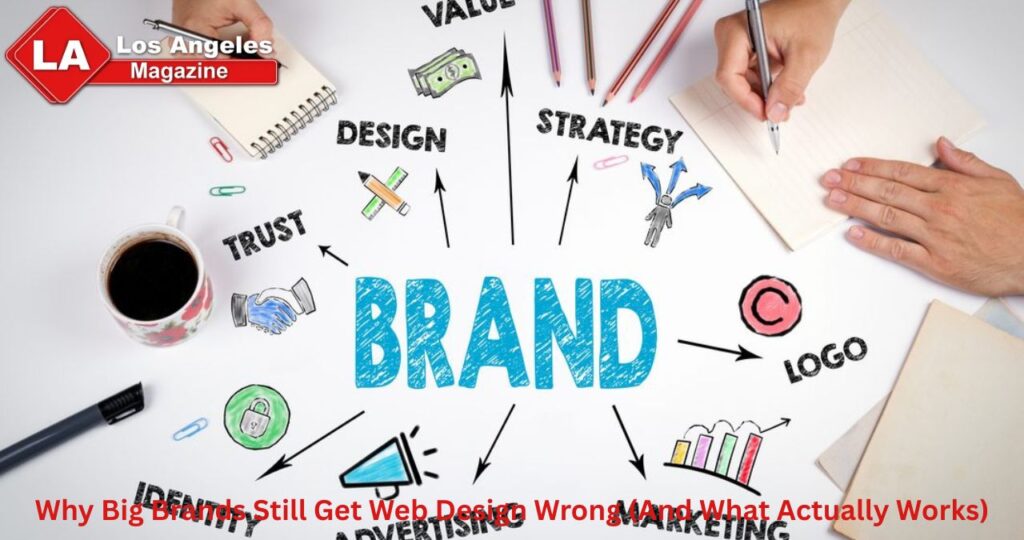When a company gets big, there’s a common assumption that everything about it is dialed in—including the website. But size doesn’t always mean sophistication. In fact, some of the most recognizable brands out there are working with web designs that feel about ten years out of sync with how people actually use the internet today. The navigation’s clunky, the mobile version is an afterthought, and the user flow feels like it was mapped out by someone who’s never actually tried to buy anything on the site.
Big businesses don’t have a lack of resources—they have a complexity problem. Layers of approval, legacy systems, and “that’s how we’ve always done it” syndrome can get in the way of something as straightforward as a functional, appealing web experience. But the truth is, your audience doesn’t care how big your company is. They just want to click, scroll, and buy without feeling like they’re doing your QA work for you.
Scale Shouldn’t Mean Slow
One of the biggest challenges for large organizations is simply momentum. It takes more time to approve a header change than it would take a startup to relaunch their entire brand. That’s the nature of the beast. But it doesn’t have to mean outdated design or stale user experiences.
When looking at how to move fast without breaking your internal structure, start by choosing partners who understand enterprise environments. The right agency will know how to present updates that satisfy both your marketing team and your IT department. They’ll build tools with scalability in mind, so your site can grow as your business does—without needing to be rebuilt from scratch every few years.
You also want to work with firms that build bridges across your systems. Your site shouldn’t live in a vacuum. If your CRM, analytics tools, and backend processes don’t integrate cleanly, the whole thing slows down. Great web design at the enterprise level isn’t just about aesthetics. It’s about infrastructure that supports the actual pace of your business.
Designing for Real-World Users, Not Committees
Big brands often design by committee, which leads to one inevitable result: no one’s happy, and the user is forgotten. Instead of focusing on how your customers actually interact with the site, the focus shifts to internal preferences, executive opinions, and a long list of brand guidelines that don’t always translate well on a screen.
That’s why it’s worth investing in strategy-first design. Not every project needs six months of stakeholder interviews and a 90-page research deck, but if you’re not grounding the process in user behavior, you’re just making something that looks nice on a presentation slide. You want heatmaps, scroll-depth tracking, user testing, and data that tells you what’s working—and what isn’t.
Mobile especially gets shortchanged in this process. Some enterprise sites still treat mobile design like it’s optional, even though most users are coming in on their phones. And if you’re building digital tools—especially those that connect with customers or sales teams—custom mobile app design should be more than a passing thought. It’s not about jumping on trends. It’s about making your site actually usable in the way your customers prefer to interact with it.
Function First Doesn’t Mean Boring
There’s this weird split in the corporate world: on one side, you have beautiful brand sites that can’t convert. On the other, you’ve got clunky but effective B2B platforms that look like they were built in 2004. The sweet spot? Building something functional and appealing. It’s absolutely possible, but it takes collaboration between creatives and tech-minded strategists who understand both the front end and what happens behind the scenes.
That means being intentional about every feature. Don’t overload your homepage with so many calls to action that your customer freezes. Don’t bury product information five clicks deep. Think about what actually helps the user move forward.
Your team should be able to explain not just what’s being built, but why. That includes content. You might not think something like blog layout matters—but if your company publishes thought leadership, then yes, it does. And yes, you should know how to convert a Twitter video and embed it without slowing your site down or confusing mobile users. These are the small things that make a big difference at scale.
Make It Feel Like a Brand, Not a Portal
Too often, enterprise websites fall into the trap of trying to be everything for everyone. And in doing so, they end up feeling like portals instead of experiences. There’s no story, no flow—just a long list of departments, initiatives, services, and maybe a confusing login page thrown in for good measure.
Good web design ties everything back to the brand’s voice. It guides the user without overwhelming them. Even large, multifaceted businesses can do this well. It’s about choosing clarity over volume. When a user lands on your homepage, they should know immediately who you are, what you offer, and how to get what they need.
This is where microcopy, iconography, animations, and subtle interactions matter. A large business might not feel “cool” by nature, but the site can still feel human. Small touches add up. Whether it’s a thoughtfully placed line of copy or a helpful search function that actually works, these are the things people remember when they visit—and revisit.
Invest in Evolution, Not Perfection
Perfection kills progress. Especially for large companies that are afraid of launching anything that hasn’t been triple-checked by everyone in the building. But digital moves too fast for that now. The best enterprise sites are built to evolve. You launch strong, then iterate. You measure, test, and adjust. You listen to feedback. You don’t wait for perfection.
This is why your design and development partners should offer long-term support, not just a polished handoff. Because your business isn’t static, and neither is your customer’s behavior. Maybe the homepage that worked in Q1 needs to shift by Q3. That’s normal. What matters is how quickly you can adapt without losing cohesion or quality.
The goal isn’t to make something shiny and impressive just once. It’s to build a foundation that lasts—and can flex with your needs as they change. Because they will change. Growth doesn’t wait for slow approvals and legacy code to catch up.
There’s something quietly powerful about a large business site that just works. It feels thoughtful without being fussy, and it carries the weight of the brand without trying too hard. It’s not always about reinventing the wheel. Sometimes it’s just about making the experience smooth, natural, and trustworthy. When a user feels that, they don’t have to think twice about staying. That’s the kind of design that wins.



